Darrah Steffen's Blog, page 6
January 10, 2022
The Cockatrice
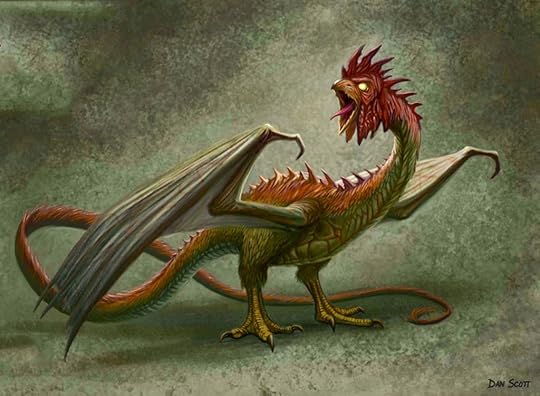
A cockatrice is a mythical beast with the body of a dragon and the head of a rooster. The creature is said to be able to kill people by its penetrating stare, deadly touch, or even by breathing fire. It has been featured throughout English myths for centuries. But what is this strange animal?

A cockatrice is said to be born when a rooster egg is incubated by a serpent. The hybrid is born with only the weasel immune to its powers. Its own site was another prominent weakness as it would turn itself to stone.
The name cockatrice was first mentioned in the Bible in the book of Isaiah. The Oxford Dictionary gives derivation from the old French cocatris translated from the Greek ichneumon – meaning tracker.

This references the crocodiles that open its jaws to the birds that enter and pick its teeth clean. An extended description the cocatris make it clear it refers to this phenomena.
However, another extinct animal may have inspired this myth as well.

Oviraptor is a genus of dinosaur that lived in Asia during the Late Cretaceous period (75 – 71 mya). The creature was named “Egg Theif” because the scientists thought the creature was stealing eggs from a nearby ceratopsian nest.
This animal is a small featured animal that looks very similar to a hybrid creature with a dragon body and rooster head. It had a toothless jaw and horny beak. The arms were developed with three long clawed fingers. The tail likely supported large feathers.
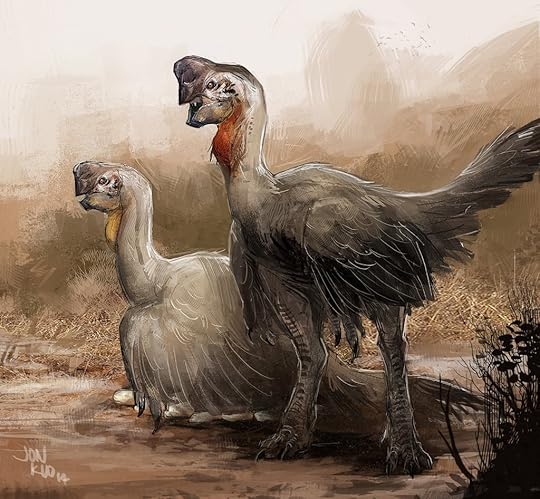
Mythology actually surrounds the Oviraptor as well. As the name implies, these creatures were thought to be egg thieves. When found in 1923, scientists mistakenly thought the eggs found with them belonged to the nearby ceratopsians – Protoceratops andrewsi.
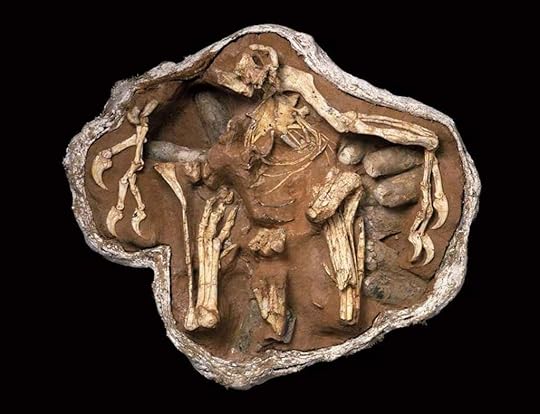
However, years later, in 1983, another paleontologist reexamined the bones and discovered that the eggs belonged to the Oviraptors and the adult skeletons were brooding.
Looking inside the eggs, embryonic oviraptors were found as well. It turned out it was the Protocertops who was robbing the nest!
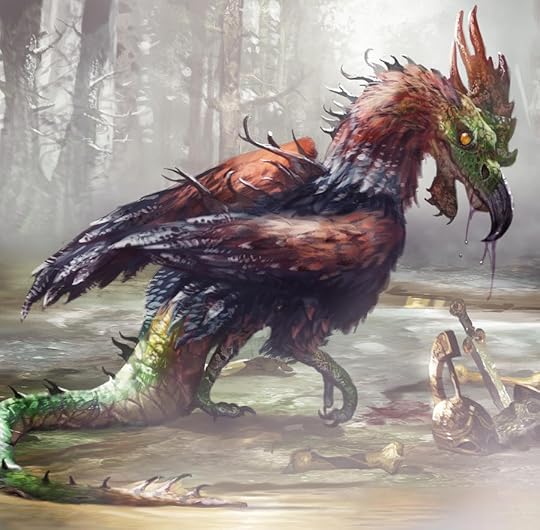
Wherever the legend of the Cockatrice came from, it is true that the creature lives on in our imagination. These creatures are fascinating, and it is fun to see how the skeleton of an Oviraptor or the mutualism between a crocodile and bird could influence the myth of the Cockatrice!
Sources:
Pedro Tafur, Andanças e viajes
Bane, Theresa (2016). Encyclopedia of Beasts and Monsters in Myth, Legend and Folklore. McFarland. p. 89. ISBN 978-0-7864-9505-4.
arsbold, Rinchen (1983): O ptich’ikh chertakh v stroyenii khishchnykh dinozavrov. [“Avian” features in the morphology of predatory dinosaurs]. Transactions of the Joint Soviet Mongolian Paleontological Expedition24: 96-103.
Osborn, H. F. (1924). “Three new Theropoda, Protoceratops zone, central Mongolia”. American Museum Novitates (144): 1−12.
January 3, 2022
New Year’s Myths

We said goodbye (and good riddance) to 2021! And we rang in 2022! Hopefully, this next year will have some better things in store for everyone.
To aid in the good luck here are some fun superstitions from around the world to bring you luck in the new year!

If you are hoping for a year of jet-setting adventure, perhaps you should ring in the new year carrying around an empty suitcase. According to Latin American superstition, this will conjure a year full of adventure.

A common American New Year’s tradition – especially in the South – is eating black-eyed peas. These legumes made their way from West Africa during the Slave Trade to feed the captured people on their arduous journey. In America, the enslaved planted them in their gardens to sustain their families and livestock.
After the Civil War, the consumption of black-eyed peas became more popular. This is thought to be mainly in part that the Union soldiers refused to take the large stocks of unfamiliar food with them as they left. It made black-eyed peas a staple in Southern diets.
From this exploded a variety of recipes. The earliest printed recipe can be found in the 1847 A Carolina Housewife cookbook – serving the legumes with pork.
However, no one knows exactly where the tradition of eating black-eyed peas for good luck and prosperity in the new year came from. One theory is that the enslaved ate black-eyed peas when the Emancipation Proclamation became effective on January 1, 1863. Another theory is based on the Southern phrase: Eat poor on New Year’s and eat fat the rest of the year.
So if you are wishing for prosperity in 2022, cook up your favorite Black-eyed pea recipe and enjoy!

New Year’s parties can get very loud, especially when the clock strikes midnight. This comes from the Chinese belief that loud noises can ward off evil spirits. Noisemakers, fireworks, and shouts were all used to ward off bad spirits who would bring ill-luck in the coming year.

Another tradition is to stock up your cupboards and fridge before the clock strikes midnight. This is done because a bare house foretells a year of scarcity. This harkens back to the Great Depression. Bare pantries were a sign of hardship and food on the shelves brought people comfort.

Finally, a popular tradition in the Phillippines says to open your door just before midnight. This is done to usher out the old year and welcome in the new.
I hope you all have a safe, happy, and prosperous 2022!
Sources:
https://www.oprahdaily.com/life/g29774563/new-years-eve-superstitions/
https://www.countryliving.com/entertaining/g29538911/new-years-superstitions/
Why Do We Eat Black-Eyed Peas on New Year’s?
December 18, 2021
2022 Pop Sugar Reading Challenge
For the past 8 years, Pop Sugar has put out their annual reading challenge. The challenge provides 40 prompts that you have to find books to fit (i.e. a book with silverware on the cover). It is up to you to decide how the book fits.
It is a great way to connect with other readers and people who love books! This year’s challenge is up! You can find it here.
If you want to follow my reading challenge, these are the books I have chosen to fulfill the prompts:

Happy reading everybody!
December 13, 2021
Christmas Myths

Christmas is a very popular holiday, celebrated by people both in and outside the Christian faith. Because of its popularity, myths have sprung up around the holiday. So where did these myths come from?

Christmas is typically celebrated on December 25 around the world. This is considered Jesus’s birthday. While it is true we don’t officially know his true date of birth, the middle of winter seems like an unlikely time.
The Bible states there were sheperds in the field and the country was completing a census. Censuses were typically held in September or October. Shepherds also would have moved their flock indoors during the cold winter months. Scholars agree that Jesus was born near the end of September.
We celebrate Christmas at the end of December to coincide with the celebrations of Winter Solstice and Saturnalia. It was a move by the early Catholic Church to bring the so-called pagan regions into the fold.

Many people also consider Christmas the most important Christian holiday. This holiday – while important – takes a back seat to Easter. Easter celebrates Jesus’s rising from the dead and much more celebrated around the world. The Easter season lasts about two months, much longer than Christmas.
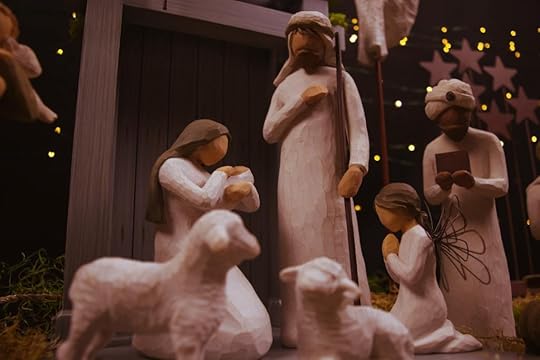
We have all heard the story of the Nativity. Jesus was born in the stable because there was no room at the inn. Recently, Minister and biblical scholar Reverend Ian Paul insists Jesus was not born in a stable, but a common room in a family home. The original story came from a mistranslation of the original Greek – which made it sound as if he was born amound farm animals. The Greek word ‘kataluma’ was wrongly translated as inn. It actually meant private room.

Many Christians become upset seeing the shortened version of the word Christmas. It is commonly thought that the abbreviation is to take ‘Christ’ out of Christmas. The X is simply a substitute for the Greek word Chi which represents Christ.

Another common myth is Santa Claus. As previously discussed St. Nicholas was a bishop in Turkey during the 4th Century who would leave money in the stockings of poor people. December is St. Nicholas’s Day. Europeans co-opted the person and traditions calling him Father Christmas. Over time, he morphed into Santa Claus.

Even with these misconceptions, the holidays are a time of love and laughter. They are a time where we come together. I wish you all a happy and safe Christmas.
Sources:
The 12 myths of Christmas
https://www.washingtonpost.com/opinions/five-myths-about-christmas/2011/12/12/gIQAkR1VyO_story.html
December 11, 2021
Holiday Sale

“Rise of the Dragon Queen” is on sale through New Years!
If you have wanted to check out the epic story but were put off by the cost, now is your chance! The physical and ebook are on sale through New Year’s Day! It makes a perfect gift or just a cozy read for a winter day.
December 6, 2021
Santa Claus

Santa Claus. Father Christmas. Kris Kringle. Good Ol’ St. Nick. Whatever you call him, his image and story is easily recognizable by all. He is thought of a jolly man in red who brings toys to good boys and girls on Christmas Eve. But where did this idea come from?

The idea of Santa Claus is most commonly tied to the story of St. Nicholas.
Nicholas was a monk that lived around 280 A.D. in Turkey. He was much admired for his piety and kindness. His wealthy parents raised him to be a devout Christian. They died in an epidemic while Nicholas was still young. Nicholas took the words of the Bible “sell what you own and give the money to the poor” to heart.
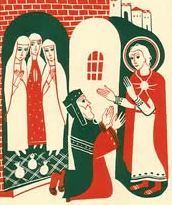
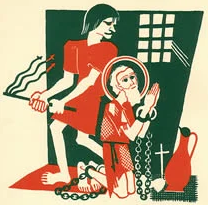
Nicholas used his inheritance to assist the needy, sick, and suffering. He dedicated his life to serving God and was made Bishop of Myra. A popular story is that he saved three poor sisters from being sold into slavery by providing them with a dowry so they could be married.
Mysteriously, on three different occasions, a bag of gold appeared in their home. The bags of gold were tossed through an open window and said to have landed in stockings or shoes left by the fire to dry. This led to the custom of hanging stockings by the fire. Sometimes the story is said to have given gold balls – which is why oranges are sometimes associated with St. Nicholas.
Bishop Nicholas was exiled and imprisoned for his faith under Roman Emperor Diocletian. The prisons were so full of religious prisoners, there was no room for real criminals. He died on December 6.

Over the course of many years, Nicholas’s popularity spread and he became known as the protector of children and sailors. His feast day on December 6 is considered a lucky day to be married or make large purchases.
By the Renaissance, St. Nicholas was the most popular saint in Europe. Even after the Protestant Reformation, St. Nicholas maintained a positive reputation.

St. Nicholas began to morph into the Santa Claus we know towards the end of the 18th Century. In December 1773, a New York newspaper reported that groups of Dutch families had gathered to honor his feast day.
The name Santa Clause came from St. Nicholas’s Dutch nickname, Sinter Klaas. This was a shortened form of Sint Nikolass. In 1804, a member of the New York Hisotrical Society distributed woodcuts of St. Nicolas at the society’s annual meeting. The image contained now-familiar Santa images including stockings and toys.
As his prominence grew, he was described as everything from a rascal wearing a blue three-corned hat and red waistcoat to a man wearing a huge Flemish hose.

In the early 19th century, advertisements started to use the idea of the newly popular ‘Santa Claus.’ In 1841, thousands of children visited a Philidelphia shop to see a life-sized Santa model. After that live Santa’s began.
In the early 1890’s, the Salvation Army needed money to pay for the free Christmas meals. They began to dress up unemployed men in Santa suits to solicit donations. These familiar Santas have been ringing bells ever since.
The idea of Santa has taken off since then, appearing in books, movies, ads, and more! It all started with a selfless man.
Sources:
https://www.stnicholascenter.org/who-is-st-nicholas
October 25, 2021
Gravestone Art
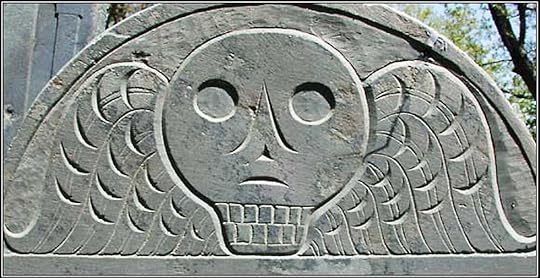
A walk through the cemetery can be a spooky but beautiful experience. Aside from the names and dates on the gravestone, there are often symbols and icons that decorate the markers.
These carvings were popularized by the Victorians who loved to find meaning in the most miniscule detail. Many of the symbols are more than pure decoration.
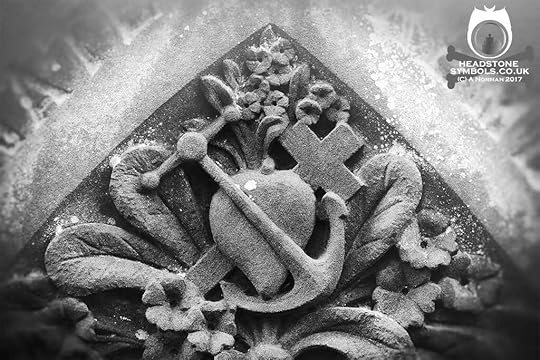
The anchor was regarded in ancient times as a symbol of safety. It was adopted by Christians as a symbol of hope. It is often included on gravestones to show the anchoring influence of Christ. It also serves as a symbol for seaman or used as a tribute to St. Nicholas. An anchor with a broken chain symbolizes the end of life.

A book found on a tombstone can represent a few things. Most often it symbolizes the Book of Life or the Bible. A book is also often used to depict learning, a scholar or someone who worked as writer. Books and scrolls also represent Evangelists.

A column in a cemetery represents a complete and full life. Alternatively, a broken column indicates a life cut short or an unexpected death. It acts as a memorial to the death of someone who died young.
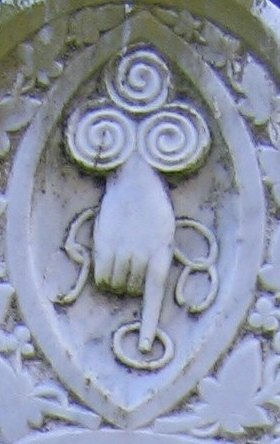
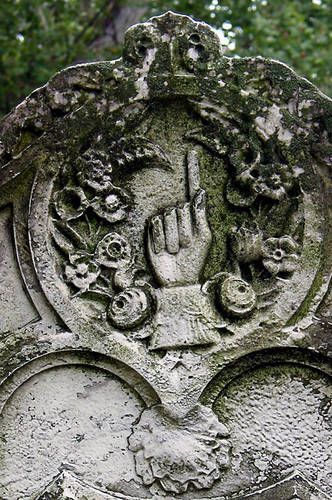
Hands on gravestones represents the deceased’s relationship with others and God. Hands tend to be doing one of four things: blessing, clasping, pointing, or praying. A hand with a index finger pointing can symbolize a couple different things depending on the direction of the finger. A hand pointed upward symbolizes the hope of heaven, while a hand pointing down represents God reaching for the soul.
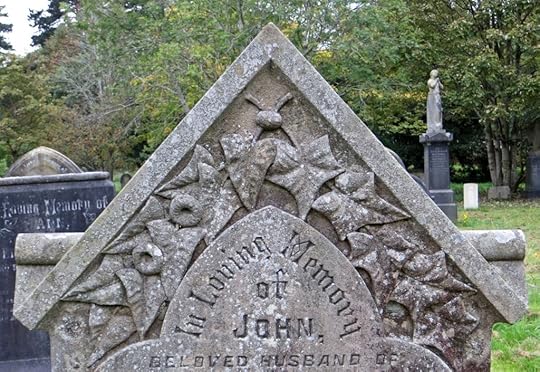
Ivy on a tombstone is said to represent friendship, fidelity, and immortality. The green leaves denotes immortality and rebirth – due to the hardiness of the actual plant. Alternatively, oak leaves signify strength, honor and steadfastness. Olive branches symbolize peace and that the soul has departed. This association can trace back to Greek mythology where the goddess Athena gave an olive tree to Athens. The olive tree is known to represent longevity, fertility, fruitfulness, and prosperity.
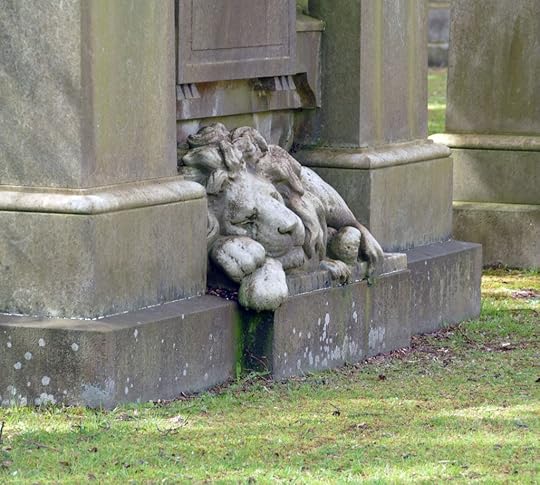
The lion serves as a guardian, protecting the tomb from unwanted visitors and evil spirits. It symbolizes courage and bravery. Lions can often be found sitting on top of vaults and tombs.

A lit torch represents immortality and everlasting life. The inverted torch is more commonly used in graveyard art. An inverted torch represents death or the passing of the soul into the next life. The torch generally will bear the flame to symbolize life in the next realm.

In its generic form, the wheel represents the cycle of life or the wheel of time. It could also symbolize a wheelwright. Specific types of wheels may be found including the eight-spoked Buddhist wheel of righteousness and the circular wheel of the Church of World Messianity.
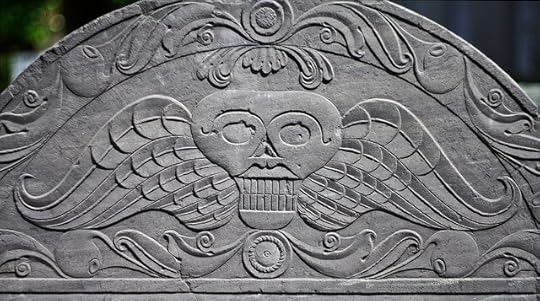
The winged death head most often means a person’s journey is not over. They have shed their physical form and are moving on to the next realm. In the United States, the death’s head was initially a non-religious symbol used to denote a corpse.
Next time you are visiting a graveyard, perhaps you may learn a bit more about what was important to the people you pass with what is etched on their gravestones.
Sources:
The Hidden Meanings of Common Gravestone Symbolshttps://weburbanist.com/2015/10/28/the-language-of-death-15-gravestone-symbols-explained/
https://www.thoughtco.com/photo-gallery-of-cemetery-symbolism-4123061
October 18, 2021
Vampires (Part II)
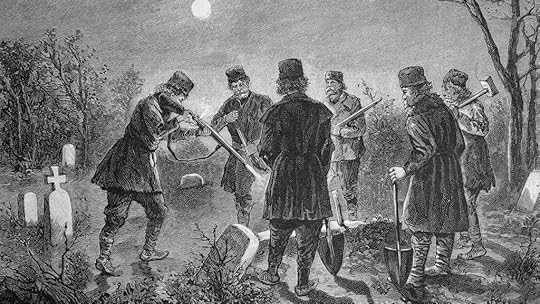
Last week we discussed how the myth of vampires was made famous by writers like Bram Stoker taking inspiration from historic figures such as Vlad the Impaler. There is another more medical explanation to vampirism. It even caused a region-wide panic in the United States during the 1730’s.
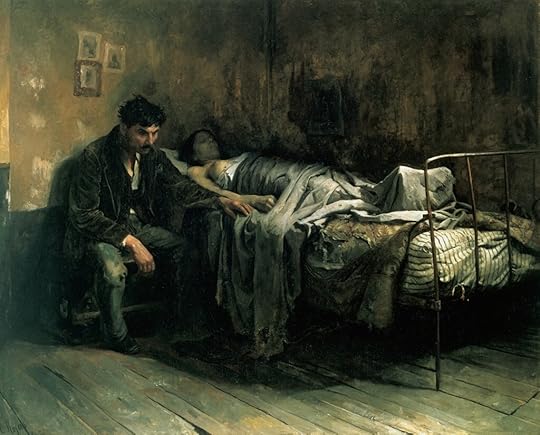
During the 1730’s, people of New England believed that a mysterious force was coming back from the dead to take down loved ones. As seen in many vampire myths, one person would start wasting away, showing signs of weakness, pale skin, and even bleeding from their face.
Once one person in the family became sick, many others would follow. It was thought that the original was coming back from their grave to drain the life from their family members.
Looking back on these symptoms, we realize now, the afflicted were suffering from consumption – now called Tuberculosis.

In the early 1700’s, Tuberculosis was not a known disease. In fact, the bacteria causing the sickness would not be identified until 1882. During this time, TB killed one out of every seven people living in the United States and Europe. It is not hard to see how this would strike fear in the stricken populations.
Tuberculosis is caused by Mycobacterium tuberculosis (MTB) bacteria. It generally affects the lungs, but can also cause damage to other parts of the body. Most infections show no symptoms, but can spread the bacteria. Symptoms of active cases include chronic coughing with bloody mucus, fever, night, sweats, and weight loss. It was called Consumption due to the weight loss seen in many patients.
Those at highest risk to contract the disease are those that share household, workplace, and social contacts of people with active TB.

Examining the symptoms of TB and comparing the usual markers of a vampire, we can see a large number of overlap. The pale bodies, blood, and wasting body can all be drawn back to those afflicted with TB. The thought that vampires prey on loved ones can also be tied to TB.
As noted, those most in danger of contracting the disease are those sharing space with an active case. Once one person in the household became sick, the others would likely fall ill as well. TB is a deadly disease without the treatments we have today. It was fatal to many who contracted it.
This led to the New England Vampire Panic.

The panic raged along with the tuberculosis outbreak in Rhode Island, eastern Connecticut, Vermont, and other parts of New England. States dealt with the panic in different ways, but to stop the attacks many bodies were exhumed and mutilated.
To prove that the deceased were in fact vampires, their bodies were exhumed. They would look for evidence of movement in the coffin and growth of their hair and nails. If they found evidence of this, it was a sign that they had returned from beyond.
In some cases, such as Mercy Brown in Rhode Island, they found she had “turned in the grave.” Experts say this was due to muscle spasms after death. Mercy Brown was buried in the middle of winter and not exhumed until after thaw. It is believed her body twisted during this, leaving her sitting oddly in her coffin.
Due to the New England Vampire Panic, the idea that your hair and nails grow after death became prevalent. It was thought this phenomenon was happening and that is what the exhumers were seeing. However, as the body decays, the skin pulls away from the nail and hair. This gives the appearance that the body continued growing after death.
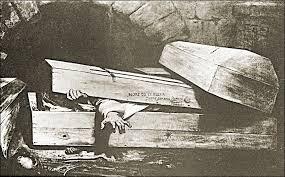
Evidence of movement and growth were not the only signs the panic villagers looked for to confirm vampiric activity. They would cut into the heart and look for “fresh blood.” It is not defined what qualified as fresh blood. From reports, it can be inferred if blood was present, it was enough to be considered evidence of vampiric activity.
After checking for evidence of vampiric activity, the villagers had to then take care of the demon residing in the deceased to save the remaining family members.
The heart was exhumed from the body and burned. This was done to kill the demon and prevent its nightly stalking. In some cases, the askes of the heart were mixed with water to give to the afflicted family members to drink. Others were forced to breathe in the smoke from the burning body.
If the exhumation did not work and the family was still falling ill, it was believed that the demon had not been found. There was another family member haunting them.

Cases where the body was decayed or the heart was not present did not stop the frightened villagers. In these cases, the head was removed from the body. Garlic was stuffed in the mouth and the head was placed between the legs. The body was then staked to the coffin for good measure.
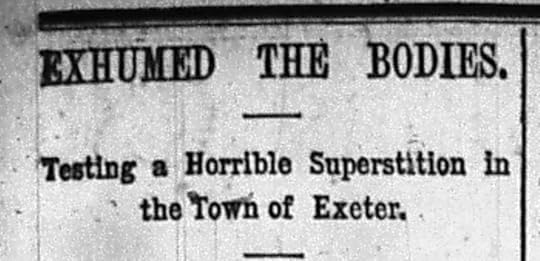
The panic ended as the pandemic died in the town. The superstitions were calmed in the towns. Many newspapers reported that these practices were enacted by “the uneducated” and seen as “viscous.” Even at the time it was considered an old superstition, but that did not stop 11 recorded exhumations and mutilations.
Sources:
https://www.who.int/news-room/fact-sheets/detail/tuberculosis
https://www.cdc.gov/tb/worldtbday/history.htm
https://salemghosts.com/the-new-england-vampire-panic/
Tucker, Abigail. “The Great New England Vampire Panic”. Smithsonian magazine (October 2012).
You can learn more from:
Morbid Podcast: Episode 264 The New England Vampire Panic
Distillations Podcast: Vampire Panic (Jun 28, 2021)
October 10, 2021
Vampires

The myth of the vampire has been around for a long time. They are most commonly seen as evil beings who roam the night looking for blood to feast on. In European folklore, vampires are undead creatures often visiting loved ones and cause mischief in the neighborhood they used to live in. They wore shrouds and were described as bloated, remarkably different from the pale, gaunt vampires we know today. But where did they originate?
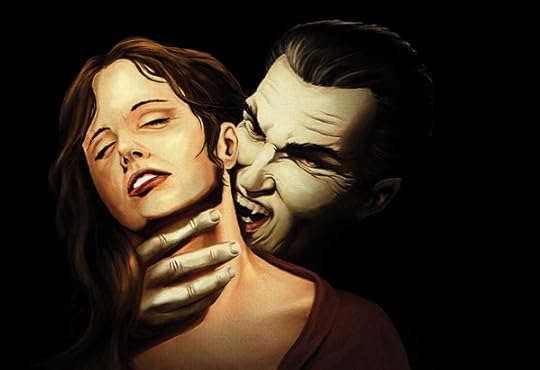
Vampires have been recorded in most cultures. The term vampire was popularized in Western Europe after reports of an 18th-century mass hysteria of fold belief in the Balkans that resulted in corpses being staked and people being accused in vampirism.
The word vampyre first appeared in English in 1732. It is derived from the German Vampir possibly taken from a Slovak verb vrepit sa and upir meaning “someone who thrusts or bites.”

While the myth of the vampire has evolved over time, some things have stayed consistent. Vampires have fangs used for feeding. The fangs can bee used to transform vampires and they are often seen as having a weakness to sunlight. Vampires are often shown to have a weakness to pure objects, such as holy ground or the inability to see reflections (since mirrors were originally made from silver). Other accounts suggest that they can be thwarted by forcing them to count items. This was the inspiration for the Count in “Sesame Street.”
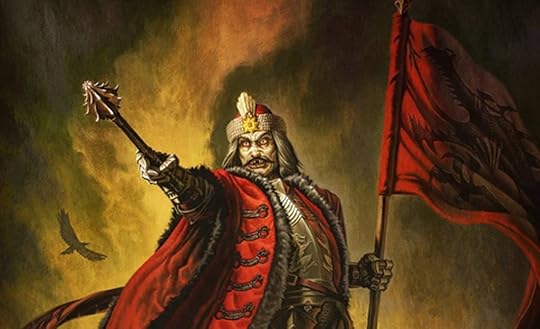
Many attribute the idea of vampirism to Vlad the Impaler. Bram Stoker’s Dracula was based on this infamous King of Romania. He was the second son of Vlad Dracul. He ruled after his father and elder brother were murdered in Wallachia in 1447.
Stories about Vlad’s brutal acts began circulating during his lifetime. After his arrest around 1462, the stories had become widespread. The pope even included Vlad’s misdeeds in his Commentaries.
In 1456, Vlad was charged with leading a force to defend his home from invasion. His battle to protect his homeland was victorious. He personally beheaded his opponent in one-on-one combat. Still, his lands were in a ruinous state due to warfare and internal strife caused by feuding aristocrats. Vlad invited hundreds to a banquet. He had his guests stabbed and bodies impaled from anus to mouth. The bodies were displayed in his courtyard. Other stories report him having religious hats nailed to Ottoman diplomat’s skulls due to a perceived slight. Other legends speak of him dipping his bread in the blood of his victims.
In total, Vlad is estimated to have killed around 80,000 people through a variety of means. 20,000 of these people were impaled and put on display outside the city of Targovsite to be picked apart by crows.
Bram Stoker never visited Vlad’s homeland. However, he learned of these atrocities from British consul William Wilkinson. He wrote “An Account on the Principalities of Wallachia and Moldavia” With Various Political Observations Relation to Them” in 1820. In this book, Wilkinson dives into the history of Vlad Tepes – known as Vlad the Impaler.

In modern times, vampires are seen as tragic, romantic figures with works like Twilight and Vampire Diaries gracing book shelves and screens. But we can all agree the legend is here to stay!
Sources:
https://www.nbcnews.com/sciencemain/vlad-impaler-real-dracula-was-absolutely-vicious-8c11505315
Florescu, Radu R.; McNally, Raymond T. (1989). Dracula, Prince of Many Faces: His Life and his Times. Back Bay Books.
Treptow, Kurt W. (2000). Vlad III Dracula: The Life and Times of the Historical Dracula. The Center of Romanian Studies.
Reader’s Digest Association (1988). “Vampires Galore!”. The Reader’s Digest Book of strange stories, amazing facts: stories that are bizarre, unusual, odd, astonishing, incredible … but true. New York City: Reader’s Digest.
“Russian Etymological Dictionary by Max Vasmer”
Silver, Alain; Ursini, James (1997). The Vampire Film: From Nosferatu to Interview with the Vampire. New York City: Limelight Editions.
October 4, 2021
Black Cats
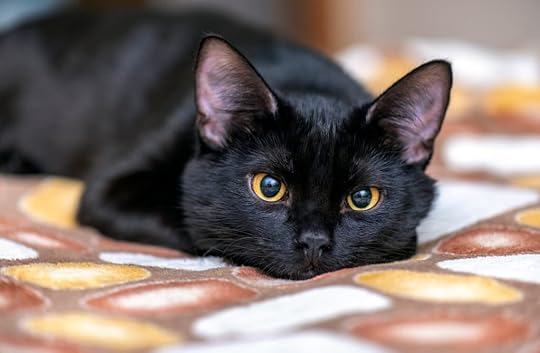
The superstition associating black cats with bad luck is rooted in the European fear of darkness. In Celtic mythology, the Cat Sith stole souls of the deceased. Devil-fearing Christians killed these cats because they thought they were agents of the underworld. The fear even carried to the Salem Witch Trials. Settlers were accused of witchcraft for even owning black cats.
Even today black cats are considered bad luck. They are the hardest animals to adopt from a shelter and can even be abused around full moons or Halloween. On the flipside, self-proclaimed witches own these animals as familiars. How did this animal get such a bad rap?
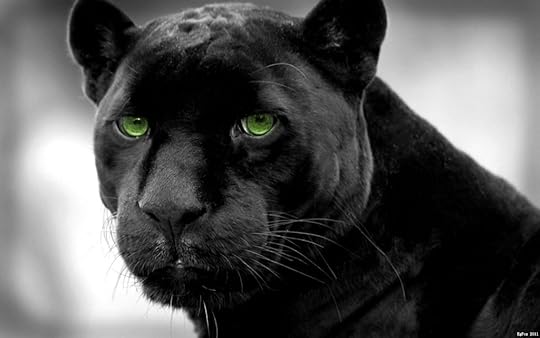
A study published in the International Journal of Psychology and Behavioral Sciences describes the possible originals as a way of creating the perception of “having control over outer conditions.” Phobias are often rooted in our psyche from something along our evolutionary past that is a danger to us. For example, many people are afraid of spiders because several varieties can bite and kill you.
The superstition around black cats could have initially stemmed from this. Cats – even domestic cats – are predators. They may have once hunted our ancestors. The fear of this may still be rooted in our unconscious brain making us wary around these animals.
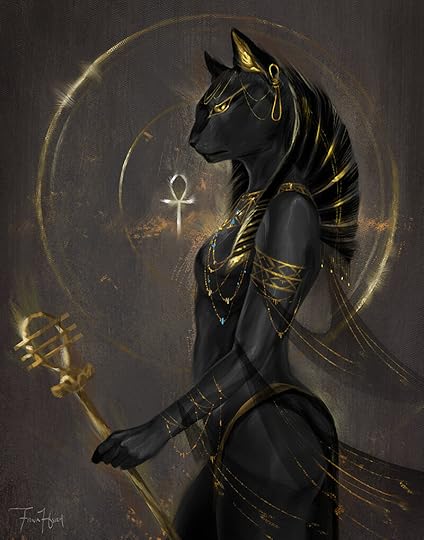
In Ancient Egypt, Bastet – the goddess of domesticity and fertility – was depicted as a black cat. Generations of artists showed her differently as her mythos evolved. Even as her image evolved to more savage animals, her perceived personality softened to be a daily companion and helper. She was greatly venerated but she was also equally feared. Her two titles were: The Lady of Dread and The Lady of Slaughter. As she grew more popular and feared, crimes against cats were punishable by death. As she fell out of favor, so did the symbol of her power.
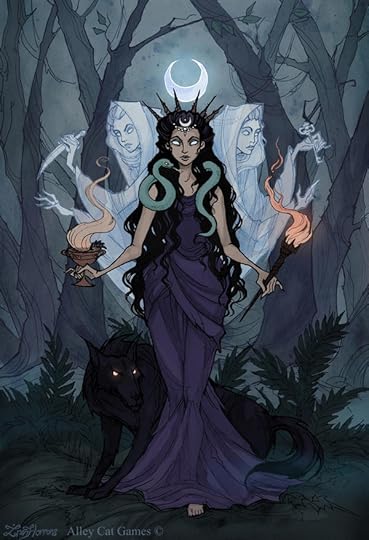
In Ancient Greece, black cats gained their association with witchcraft. The goddess of magic and spells – Hecate lived in the underworld and was said to take the form of a cat. She became associated with witches, witchcraft, magic, and ghosts. She is often shown with shadow creatures as her companion. As stories of this fearsome goddess reached the Roman culture, black cats had become a sign of bad luck.
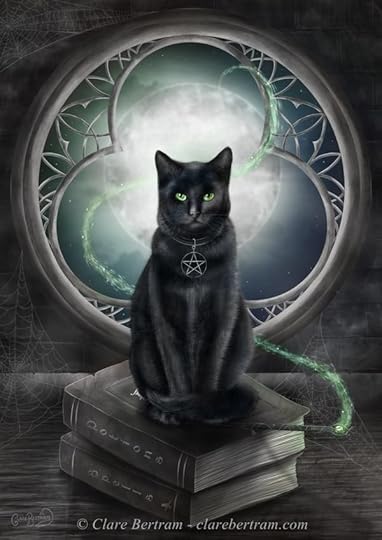
The association with bad luck made life incredibly hard for the animals. Black cats appear in folklore of many cultures both as good and bad omens. In some European folklore, black cats are considered constant companions of witches and bringers of misfortune. Along with ravens and crows, these animals were seen as omens of death. They were also thought to be spies for the Devil.
In Italy, if a black cat jumped on the bed of a sick person, it was a death omen. In Scotland, a black cat at a wake or funeral meant an attendee would die. In America, seeing a black cat in your dreams meant a loved one would die.

It is not all bad for black cats. In many cultures, black cats are harbingers of good luck as well. Sailors often use black cats as “ship cats” for their hunting abilities and the luck they bring. Sailing wives will also keep a black cat at home to protect their husbands while at sea.
In England and Scotland, a black cat appearing on your porch meant good luck was in your future. Japan revered these animals as symbols of prosperity. A prevalent superstition today is that if you black cat had one white hair, your cat will bring you good luck!
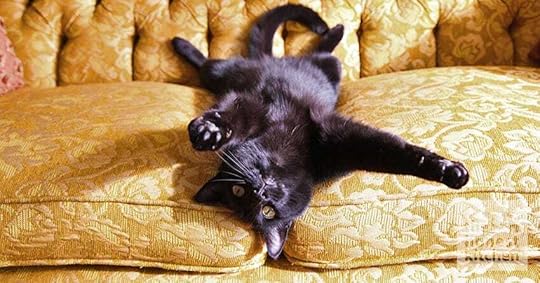
Luckily, many of the bad superstitions have vanished and they are a cuddly friend to families across the world. Still, they can be mistreated and features. So cuddle a black cat today. It can bring you luck!
Sources:
Where Did Black Cats Get Their Bad Rep?
https://www.thehonestkitchen.com/blog/why-do-people-fear-black-cats/
Superstitions and Black Cats
https://www.worldhistory.org/Bastet/
How Black Cats Went From Bad Luck to Symbols of Defiance



